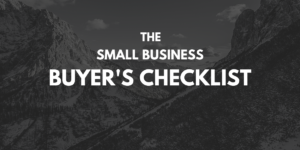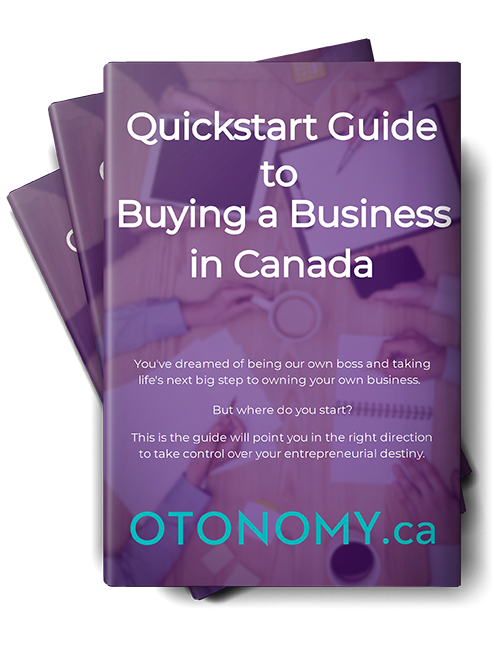One of the most daunting challenges of buying a business is figuring out how to raise the capital to buy it. While raising funding is a critical business skill, it is regularly overlooked until it is needed.
There are two basic, yet not mutually exclusive, financing strategies:
- Debt financing – borrowed funds that you pay back with interest within agreed time frame (e.g. bank loans).
- Equity financing – investing your own, or other stakeholder’s, funds into your business in exchange for partial ownership (e.g. venture capital).
Every business purchase will have its own unique considerations and situations. It is recommended that you should seek professional expertise from your accountant or other business advisers before committing to a funding decision.
Debt Financing
Debt financing is money borrowed that is paid back with interest within an agreed time frame (like a mortgage to buy a house or a car loan). The most common forms of business debt financing include bank loans, overdrafts, mortgages, credit cards, equipment leasing, and private loans (promissory notes) from investors.
Advantages
- Maintain ownership and control – without investors you maintain complete control over the business and do not have to explain or justify your decisions. Further, you simplify corporate governance as there is no need to build consensus among shareholders/equity partners.
- Profit Retention – your only obligation to your lender is making repayments within agreed time frames. You do not have to share your business profits with them or with anyone else.
- Tax deductions – unlike private loans, interest fees and charges on a business loan are tax-deductible.
Disadvantages
- Approval – traditional lenders are conservative. Small businesses can find it challenging to secure debt financing without strong financial history and security.
- Payment– your business must generate enough cash flow to service the debt (i.e. repayments plus interest). Depending on how the business is structured and how the debt is secured you may still be responsible for the debt personally even if the business fails.
- Cash flow – The need to service debt will impact your cash flow. You always need to service debt before you can remove money from your business for you. As such large debt can mean significantly less profit for you.
Equity Financing
Equity financing is when a buyer brings in investors to help fund the purchase. This can be in addition to any funds the buyer brings in themselves and can be in addition to debt financing. These investors gain a stake in the business (typically an equal percentage to the amount they invested) and share in the profit of the business. The main equity financing sources for an equity finance investor are friends and family of the buyer and individual investors. It is strongly recommended that you engage an expert in the business structure before agreeing to an equity investment relationship. Incorporated businesses, and their associated Shareholder agreements, percentage ownership, and share structures, can become complex if not agreed upon upfront.
Advantages
- Contacts and experience – many small investors bring with them a wealth of knowledge and contacts that you as the new owner can leverage. They also can add an air of credibility if they have a background in small business ownership/management.
- Less or no debt – Investors do not need to be paid back in the same manner as debt financing, so there is no direct liability for the business. This can be very helpful as many small businesses need to borrow money at some point, and having little to no debt makes the borrowing process much simpler.
Disadvantages
- Personal relationships – approaching friends and family to invest can be a stressful experience. This stress can be compounded if the business doesn’t do as well as they think it should, or if they ask for their money back before the business can afford to buy their shares back. It is strongly recommended that you and your potential investors clearly lay out the expectations behind their investment and that they understand that there are inherent risks with any small business.
- Shared ownership (and profits) – investors, by definition, are partial owners of the business and thus are typically entitled to a share of the profits. Further, many investors will expect some level of say in the direction of the business, and if their percentage ownership is high enough may demand it. It is important to consider how much control you are willing to give up and to structure your business such that it aligns with both your and your investors’ expectations.
Create A Business Plan
Once you’ve determined how you plan on paying for the purchase, it’s time to create a business plan. A business plan is a guide to your future operations, finances, and business goals. It makes it clear to potential lenders (or investors) how you intend to use the capital you are asking for. Further, it demonstrates that you have taken the time to sit down and think through how you will operate the business you plan on buying while ensuring you turn a profit.
In regards to financing your business case should include:
- How much capital you require to purchase the business and any additional funds you need to borrow for operations post-purchase.
- When you plan on needing the funds.
- Where you plan on securing funds from (loans, investors, personal savings, etc.)
- A detailed plan of how you plan on using the funds (purchase, new equipment, payroll, etc.)
- When you plan on paying the debt back and if applicable when investor(s) should expect to see a return.
Typical costs associated with the purchase of a business include:
- Purchase capital (cost of buying the business and any associated professional fees, taxes, etc.)
- Operating capital (e.g. rent, expenses, supplies, salaries/wages, , utilities, advertising/marketing, interest repayments, depreciation).
It is strongly recommended that you review your plan with your accountant and any other business advisors.
Apply For Funding
Once your business plan is complete it is time to set up appointments with your potential lenders and/or investors. It pays to be well prepared. You are likely to be asked about the following, so we recommend that you take the time to review each item and where necessary write down your responses so you have them in hand. Some of these items may already be covered in your business plan as well.
- Your previous experience in business and in the market that the small business operates.
- Your goals for buying a business.
- Why you feel you are the right person to own and run the business you are looking at.
- How the business’s goals can be achieved
- A list of your personal assets and liabilities. This should also identify which items are solely in your name and any that are jointly owned.
Offer security
Banks and other traditional lenders are risk-averse. As a result, they will very likely look to you for collateral to secure any loans you take. While they may consider some of the assets of the business you are buying (assuming they are not already encumbered), it is likely they will ask you personally for something of value (i.e. your home) as a stake against any loans. Note, lenders are reluctant to take third party security from family members, especially if those family members are at an age where there would be difficulty replacing the asset during their working life. If you are considering this as a path you will need to consider having that person(s) as a partial owner of the business.




